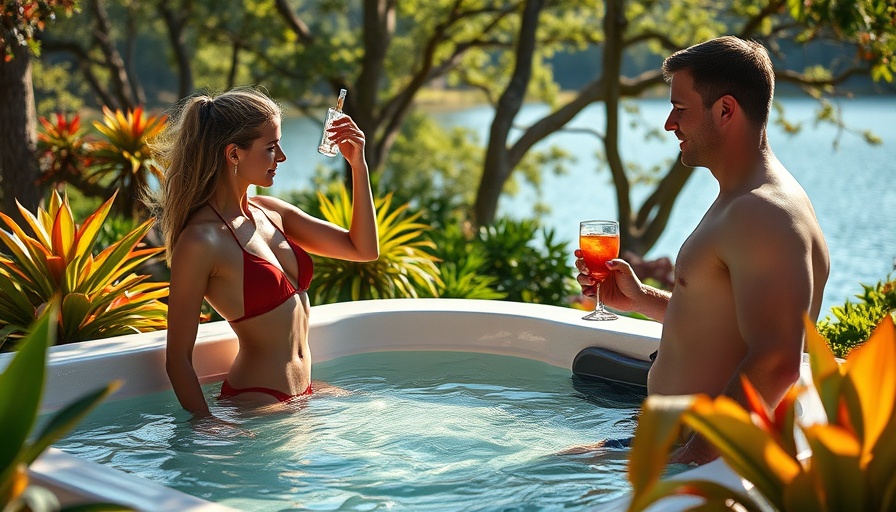
A Comfortable Soak: Understanding Hot Tub Temperature
If you've ever dipped your toes into a hot spring, you might know the bliss that warm water can bring. However, that bliss quickly turns uncomfortable when temperatures exceed 104 degrees — the upper limit recommended for hot tub enjoyment. The best soaking temperature varies among individuals; most people find comfort in a range between 100-102 degrees. Awareness of recommended temperatures is critical, especially for pregnant women and children, who should limit exposure to even lower settings.
What Causes Hot Tub Overheating?
Many hot tub owners may find themselves puzzled when their spa's water exceeds that ideal range. Factors contributing to overheating include environmental conditions, such as ambient temperature and humidity. Additionally, the heating cycles, which typically occur to filter the water, can inadvertently raise the spa's temperature when not closely monitored. Lastly, the spa’s location can play a significant role – those placed in direct sunlight can face pronounced heat creep.
Simple Strategies to Cool Down Your Spa
To maintain a comfortable soaking experience, it's essential to know how to cool down an overheating hot tub effectively. Start by lowering the water temperature manually; setting it to around 98 degrees can provide relief on particularly hot days. Utilizing the spa's cover can shelter it from direct sun exposure and help retain heat during cooler evenings while also shielding the water from debris. Lastly, consider running a cold water hose into the hot tub, which is both an immediate and practical fix!
Being aware of these factors is vital to ensure that your hot tub remains an oasis of relaxation, no matter the outdoor temperatures. Keep the temperature comfortable, and you'll prolong the enjoyment of your spa, maximizing relaxation for you and your guests, whether it’s a hot summer day or a crisp winter night.
 Add Row
Add Row  Add
Add 



Write A Comment